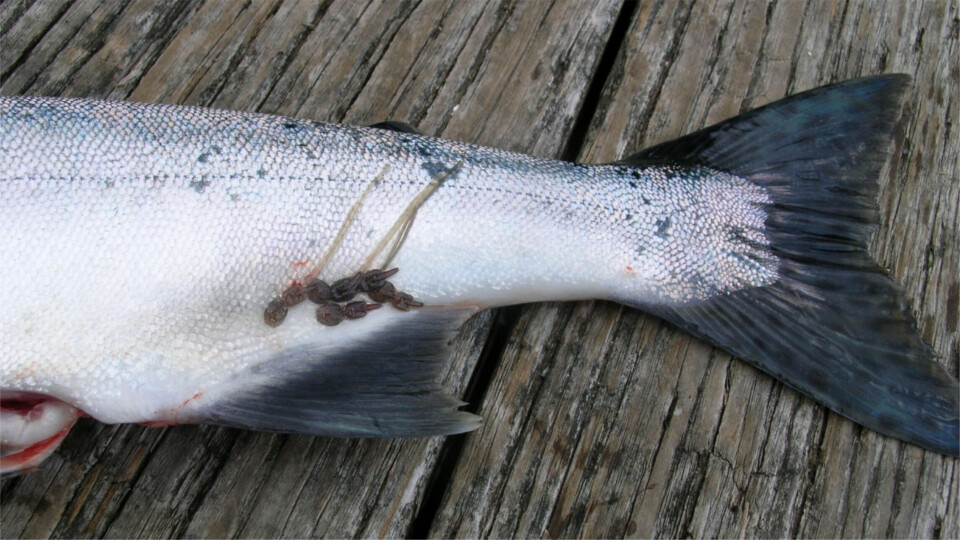
Slow-release medicine system that could revolutionise lice treatment
Researchers at the Norwegian Institute for Water Research (NIVA) have developed a new dosing system for continual treatment of salmon lice directly in cages which could make a significant difference to the way sea lice are controlled.
The overall impact to the environment is expected to be minimal and the fish are relieved of the stress associated with handling during treatments.
The system, called FISHTREAT, has been developed and patented over the last four years and was prompted by some of NIVA’s other work which detected quite high concentrations of veterinary medicinal products (VMPs) in sediment around fish farms.

‘Uploading’ medicines
Adam Lillicrap, research manager for NIVA’s Ecotoxicology and Risk Assessment section, said the principle of the FISHTREAT system is that by understanding the physico-chemical properties of different molecules it is possible to technically upload VMPs into an appropriate material such as nylon, which when placed into the fish pen enables a sustained release to treat the fish.
This would significantly reduce the amount of VMP that is needed to elicit an effect on the sea lice, which also means that the amount of VMP being lost to the surrounding area is minimised.
The system would also eliminate the handling stress caused to fish by mechanical delousing methods or wellboat bath treatments.
Nets, curtains or floating devices
The FISHTREAT system allows NIVA to impregnate certain types of polymer with VMP. The type of polymer depends on which VMP is used.
“It is possible to impregnate nets, but it could be a curtain, or semi-buoyant devices in the cages,” said Lillicrap, who developed the FISHTREAT system with fellow NIVA scientist Malcolm Reid.
He explained that computer modelling could be used to calculate the amount of VMP needed for an individual farm site, taking into account variable factors such as water exchange, etc.
“A pen wouldn’t need to be enclosed,” said Lillicrap, who also explained that a constant lower but still effective dose of VMP should not lead to increased resistance in lice.
“Some of the chemicals that affect the chitin synthesis have not been shown to have any resistance developing yet, so the system is very amenable to the use of chitin synthesis inhibitors,” he said.
Industrial partnership
NIVA is now looking towards an industrial partnership to develop its invention into a commercially viable product for use in salmonid aquaculture, and other fish farming, too.
“The beauty of this is that it is not just related to sea lice,” said the scientist, who started his career with AstraZeneca and is originally from Devon in the UK. “It could be used for all types of medicines for different reasons. It could also cover the pet industry as well.”
Lillicrap said NIVA would like to be at technical readiness level 7 – field trial stage – within the next two to three years.






















































